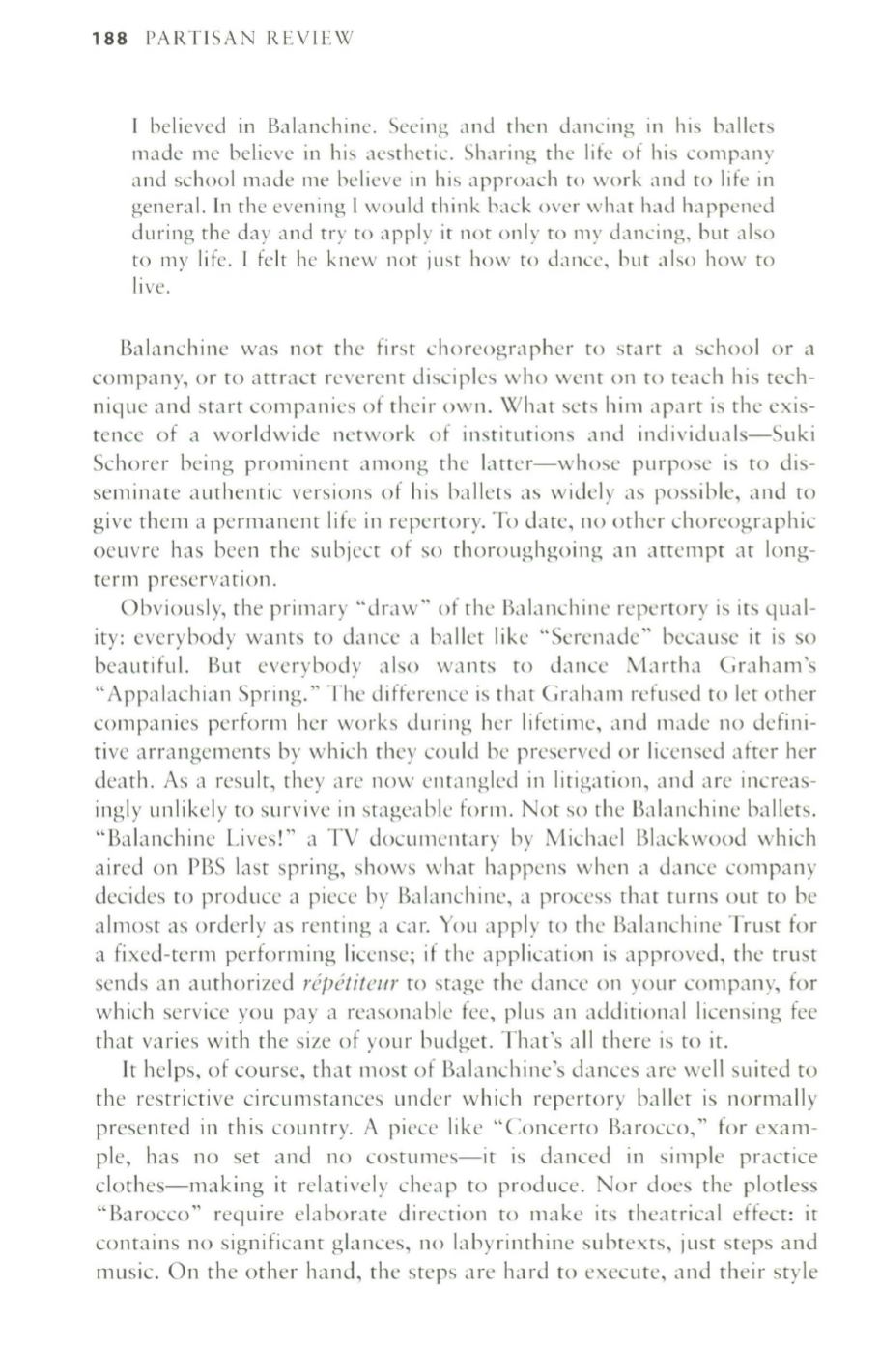
188
PARTISAN REVIEW
I believed in Balanchine. Seeing and then dancing in his ballets
made me believe in his aesthetic. Sharing the life of his company
and school made me believe in his approach
to
work and to life in
general.
In
the evening I would think back over what had happened
during the day and try
to
apply it not only
to
my dancing, but also
to my life. I felt he knew not just how
to
dance, but also how
to
live.
Balanchine was not the first choreographer to start a school or a
company, or to attract reverent disciples who went on
to
teach his tech–
nique and start companies of their own. What sets him apart is the exis–
tence of a worldwide network of institutions and individuals-Suki
Schorer being prominent among the latter-whose purpose is
to
dis–
seminate authentic versions of his ballets as widely as possible, and
to
give them a permanent life in repertory. To date, no other choreographic
oeuvre has been the subject of so thoroughgoing an attempt at long–
term preservation.
Obviously, the primary "draw" of the Balanchine repertory is its qual–
ity: everybody wants
to
dance a ballet like "Serenade" because it is so
beautiful. But everybody also wants
to
dance Martha Graham's
"Appalachian Spring." The difference is that Graham refused
to
let other
companies perform her works during her lifetime, and made no defini–
tive arrangements by which they could be preserved or licensed after ber
death. As a result, they are now entangled in litigation, and are increas–
ingly unlikely
to
survive in stageable form. Not so the Balanchine ballets.
"Balanchine Lives!" a TV documentary by Michael Blackwood which
aired on PBS last spring, shows what happens when a dance company
decides
to
produce a piece by Balanchine, a process that turns out
to
be
almost as orderly as renting a car. You apply
to
the Balanchine Trust for
a fixed-term performing license; if the application is approved, the trust
sends an authorized
repititellr
to
stage the dance on your company, for
which service you pay a reasonable fee, plus an additional licensing fee
that varies with the size of your budget. That's all there is to it.
It helps, of course, that most of Balanchine's dances are well suited
to
the restrictive circumstances under which repertory ballet is normally
presented in this country. A piece like "Concerto Barocco," for exam–
ple, has no set and no costumes-it is danced in simple practice
clothes-making it relatively cheap
to
produce. Nor does the plotless
"Barocco" require elaborate direction
to
make its theatrical effect: it
contains no significant glances, no labyrinthine subtexts, just steps and
music. On the other hand, the steps are hard
to
execute, and their style


